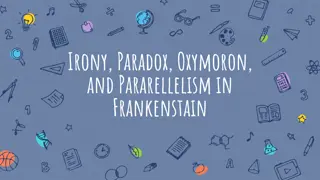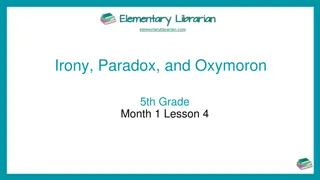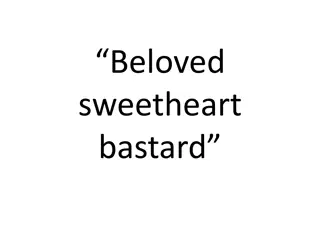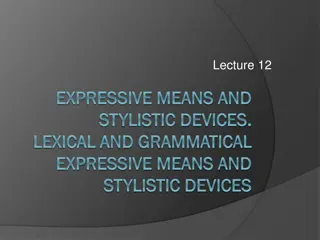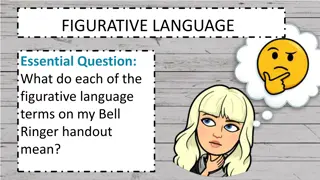Irony, Paradox, Oxymoron, and Parallelism in Frankenstein
Exploring the concepts of irony, paradox, oxymoron, and parallelism in Mary Shelley's "Frankenstein." The discussion covers different types of irony such as situational, verbal, and dramatic, highlighting instances from the novel. Additionally, the concept of paradox is examined, showcasing statemen
0 views • 16 slides
Understanding Irony, Paradox, and Oxymoron in Figure of Speech
Exploring the concepts of irony, paradox, and oxymoron through examples and exercises in a lesson designed for 5th-grade students. Students learn to identify these figures of speech that show contrast and contradiction, enhancing their understanding of language and expression. The lesson provides ex
2 views • 8 slides
Emotions of Love and Conflicted Feelings: A Literary Analysis
The literary analysis delves into the themes of love and conflicted emotions through the use of oxymoron, simile, and evocative imagery. The words "beloved" and "sweetheart" juxtaposed with "bastard" showcase the thin line between love and hate, while the simile of onion's scent highlights the dual
0 views • 4 slides
Understanding Lexical and Grammatical Expressive Means in Stylistic Devices
The lecture discusses various lexical and grammatical expressive means in stylistic devices, such as metaphor, personification, allusion, metonymy, synecdoche, irony, epithet, and oxymoron. These tools allow for creative and vivid expressions in language by playing with different meanings and associ
0 views • 22 slides
Understanding Figurative Language in English Literature
Explore the meaning and examples of various figurative language terms such as simile, metaphor, personification, onomatopoeia, oxymoron, idiom, hyperbole, allusion, and alliteration. Enhance your understanding of how these literary devices are used to add depth and imagery in writing.
0 views • 14 slides
